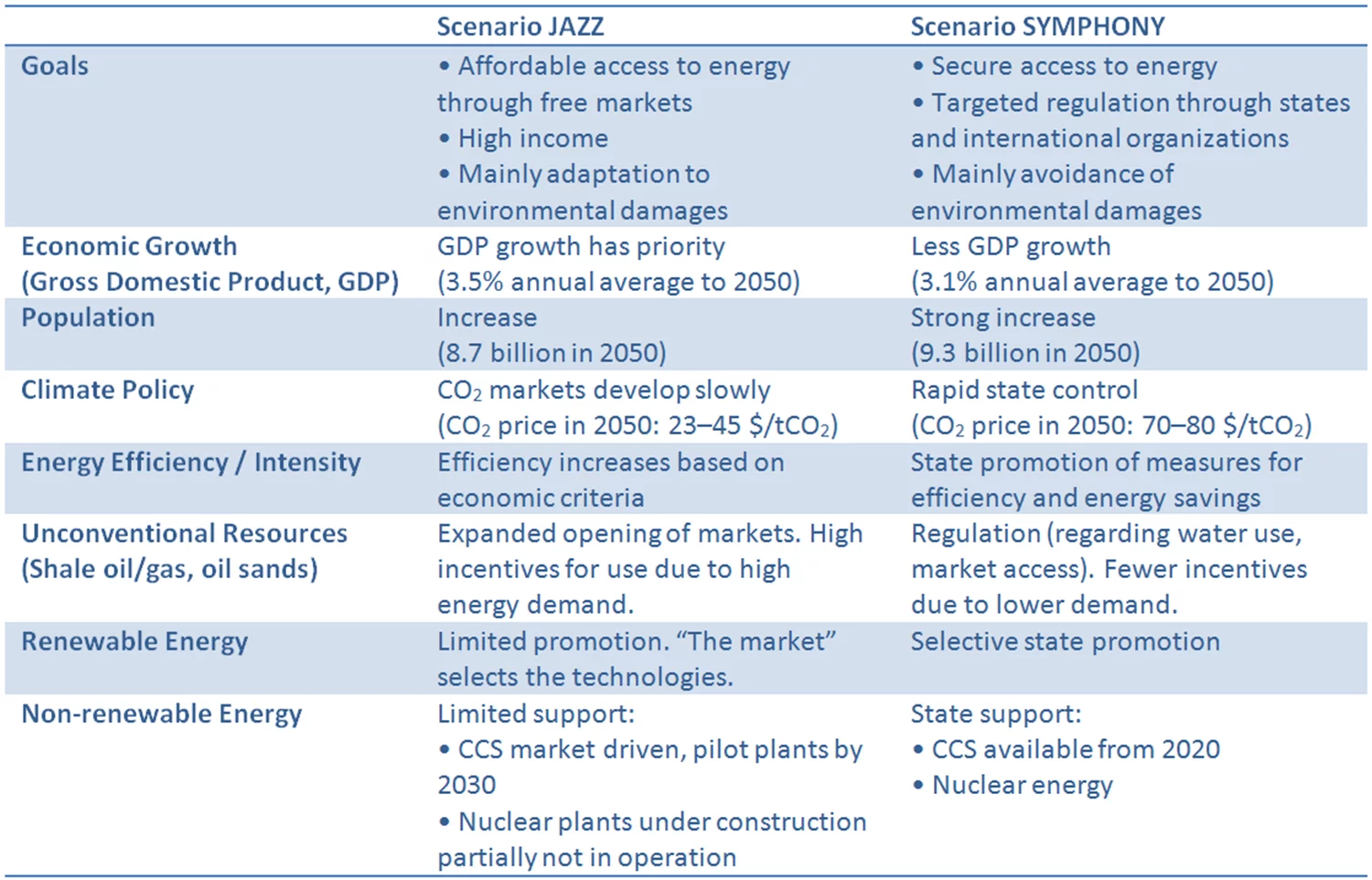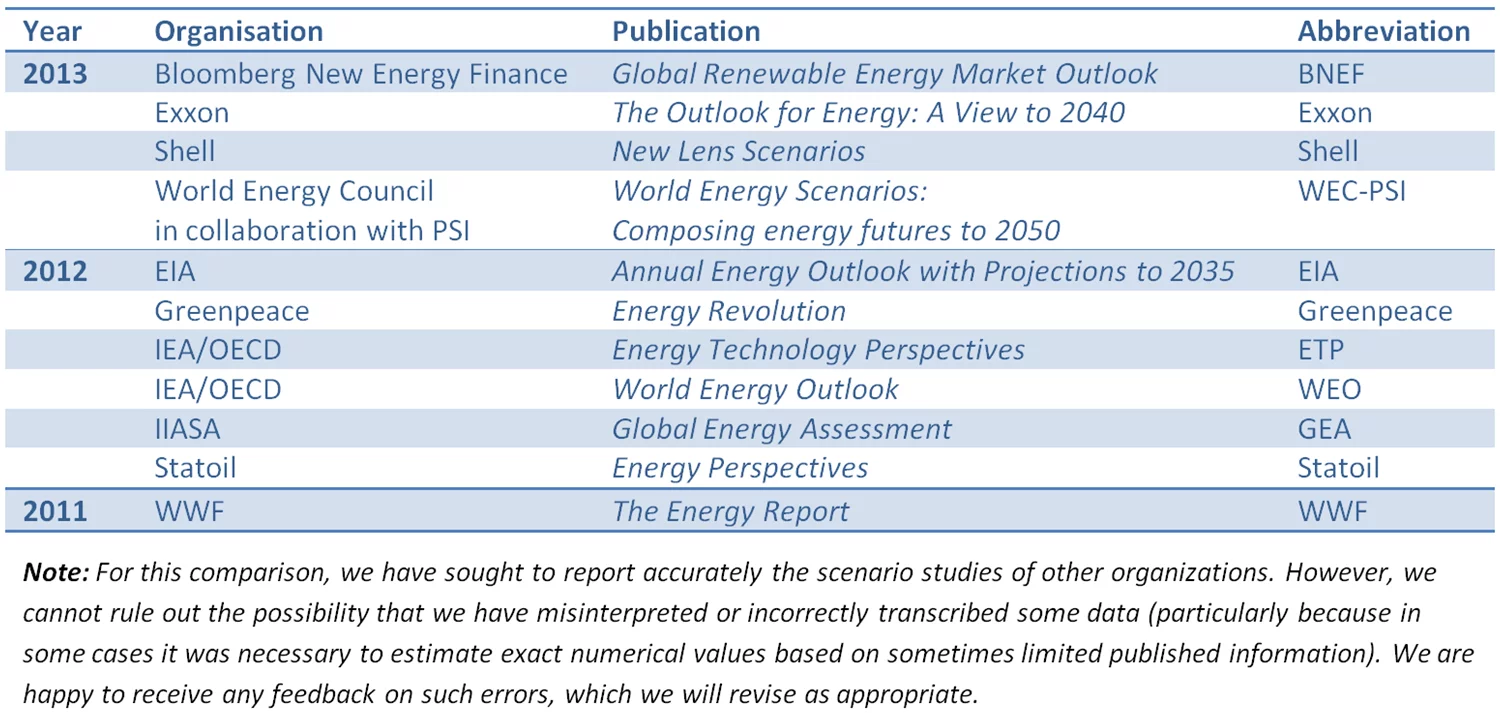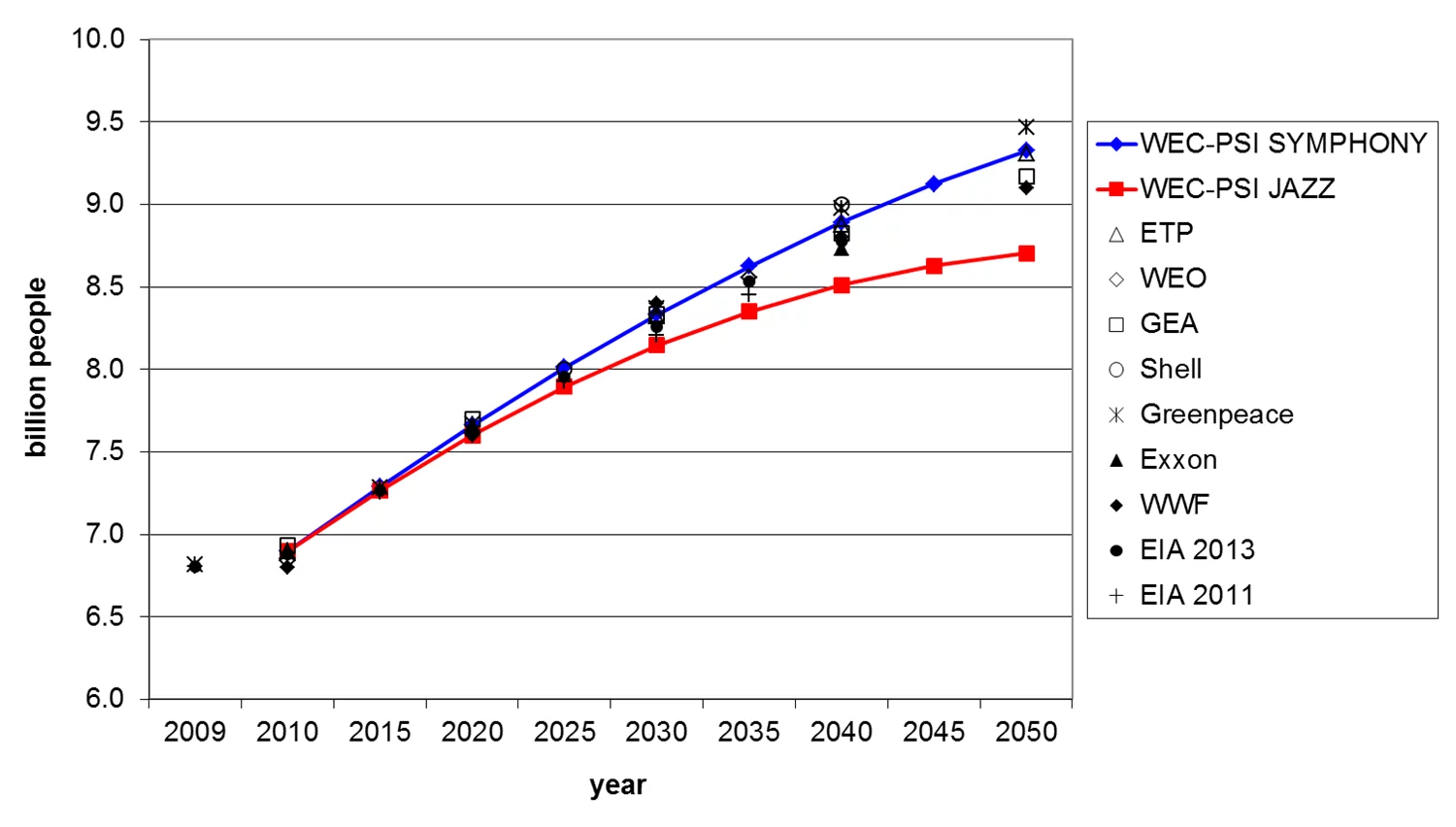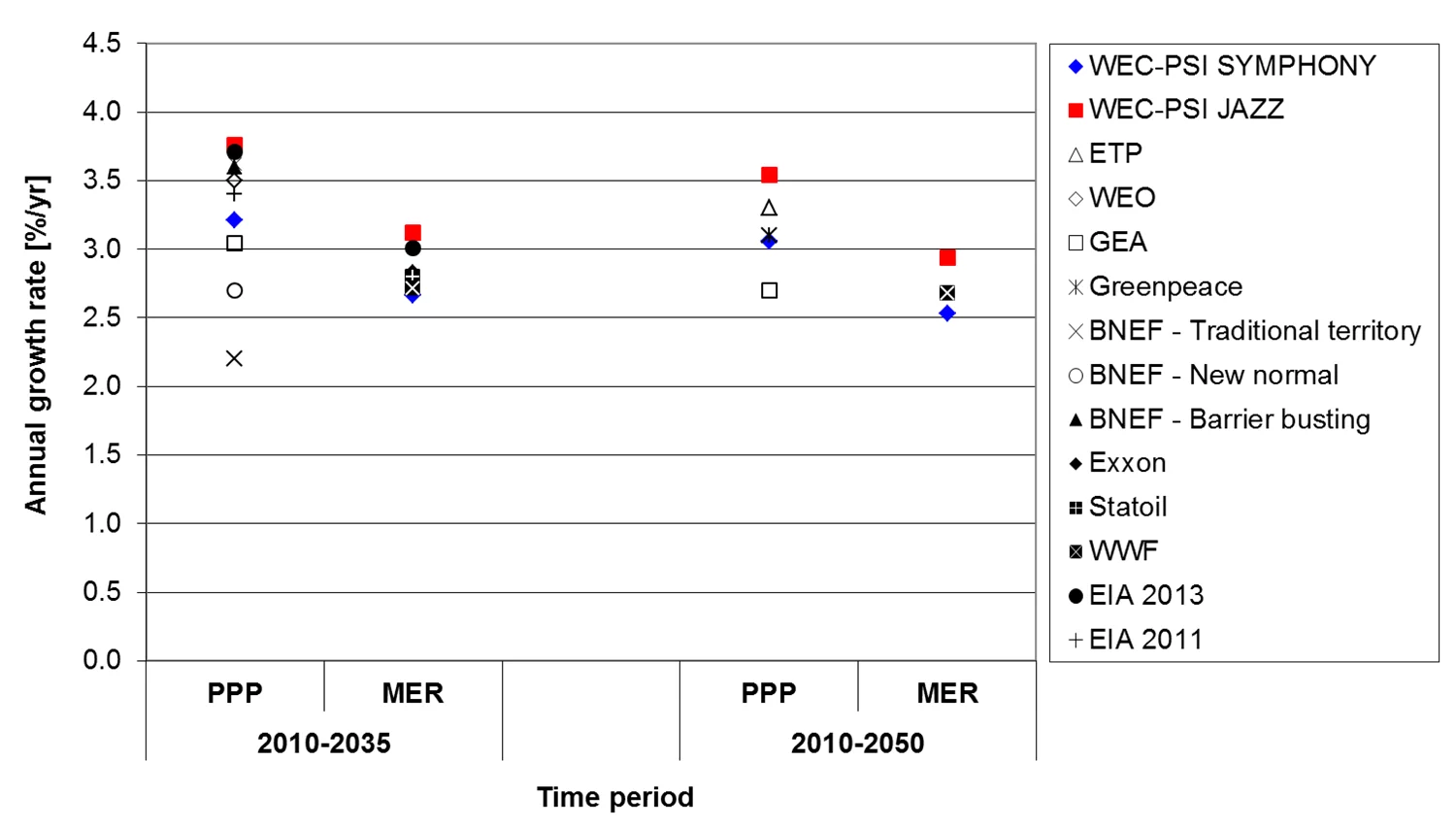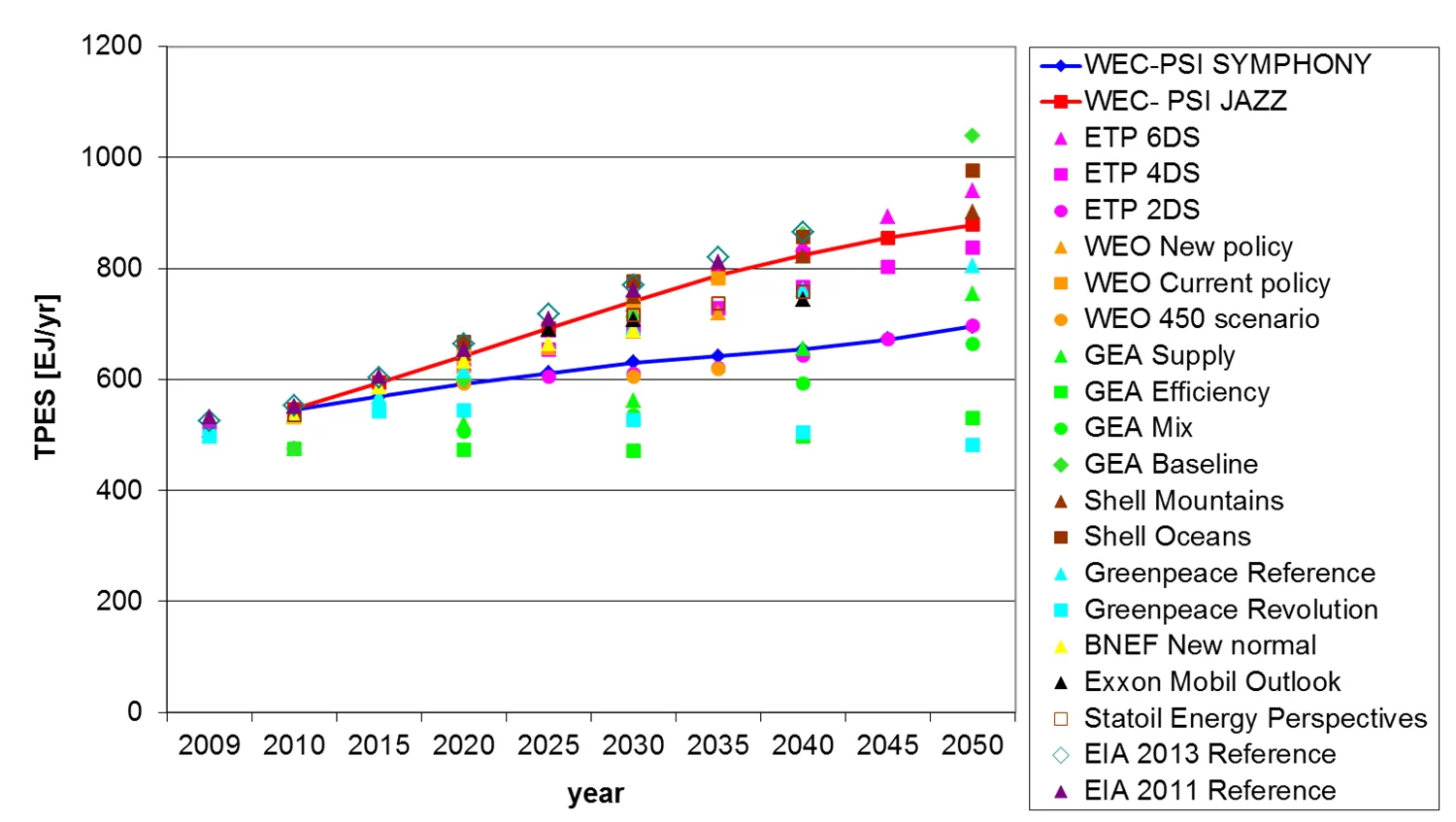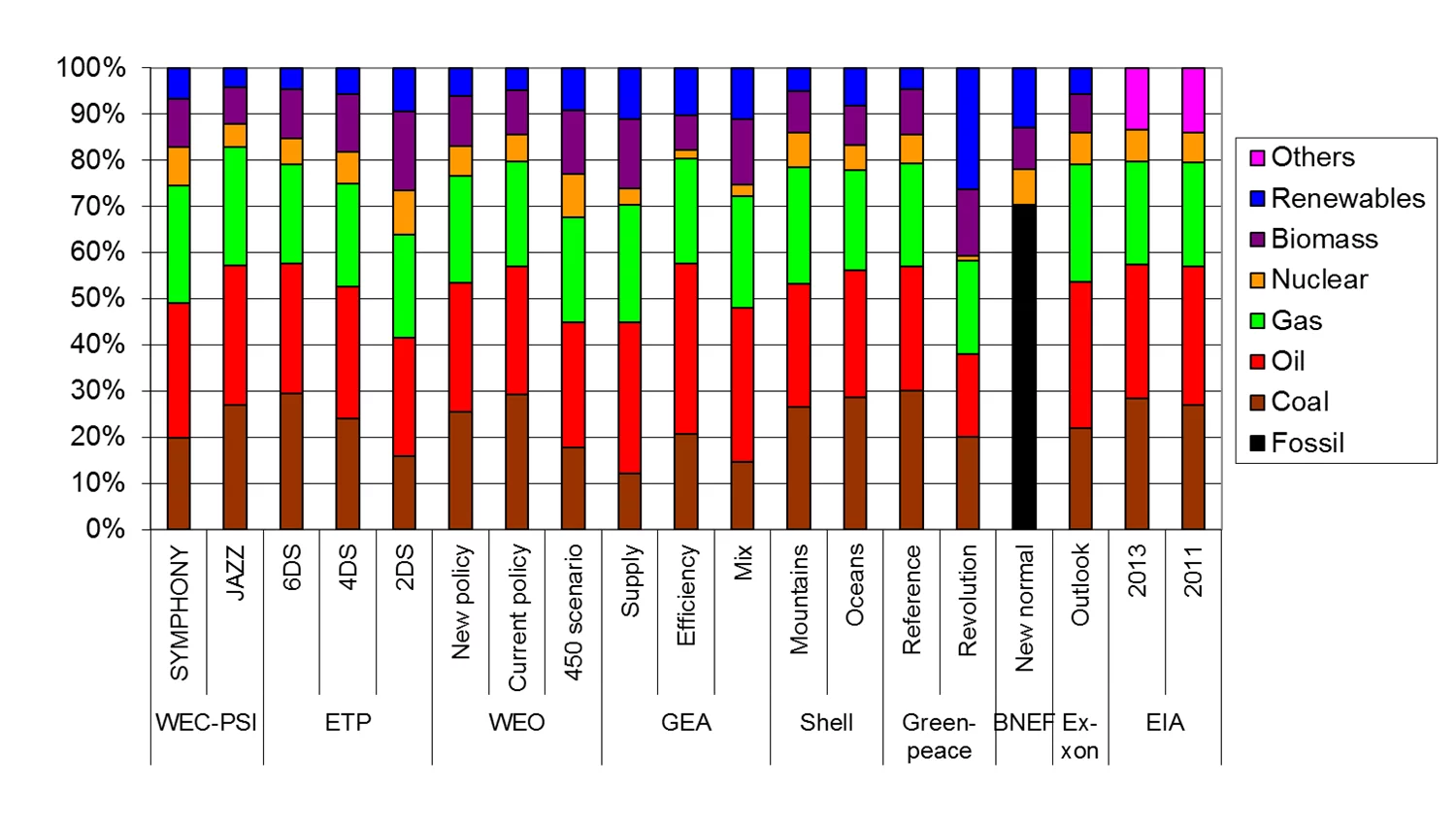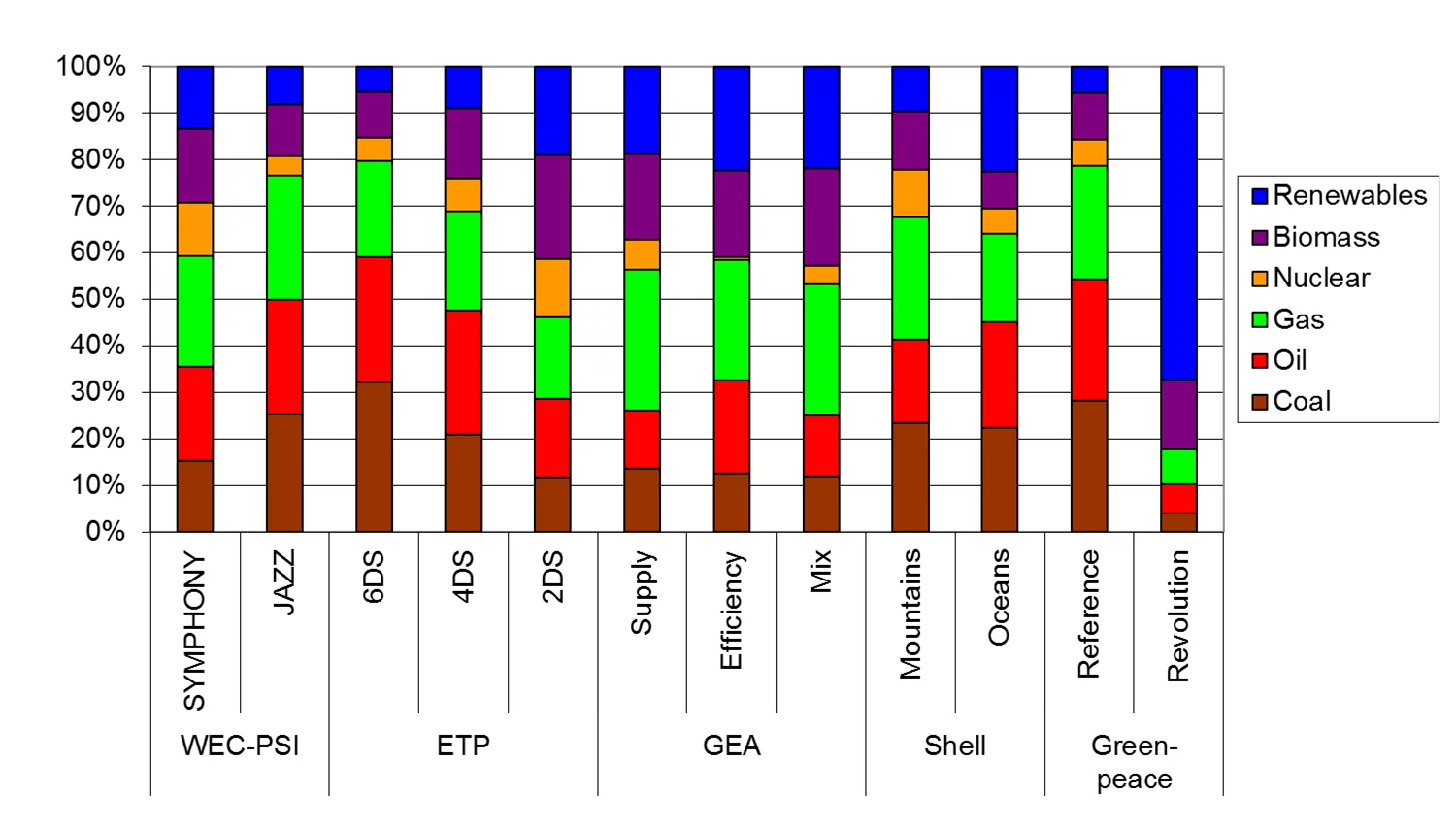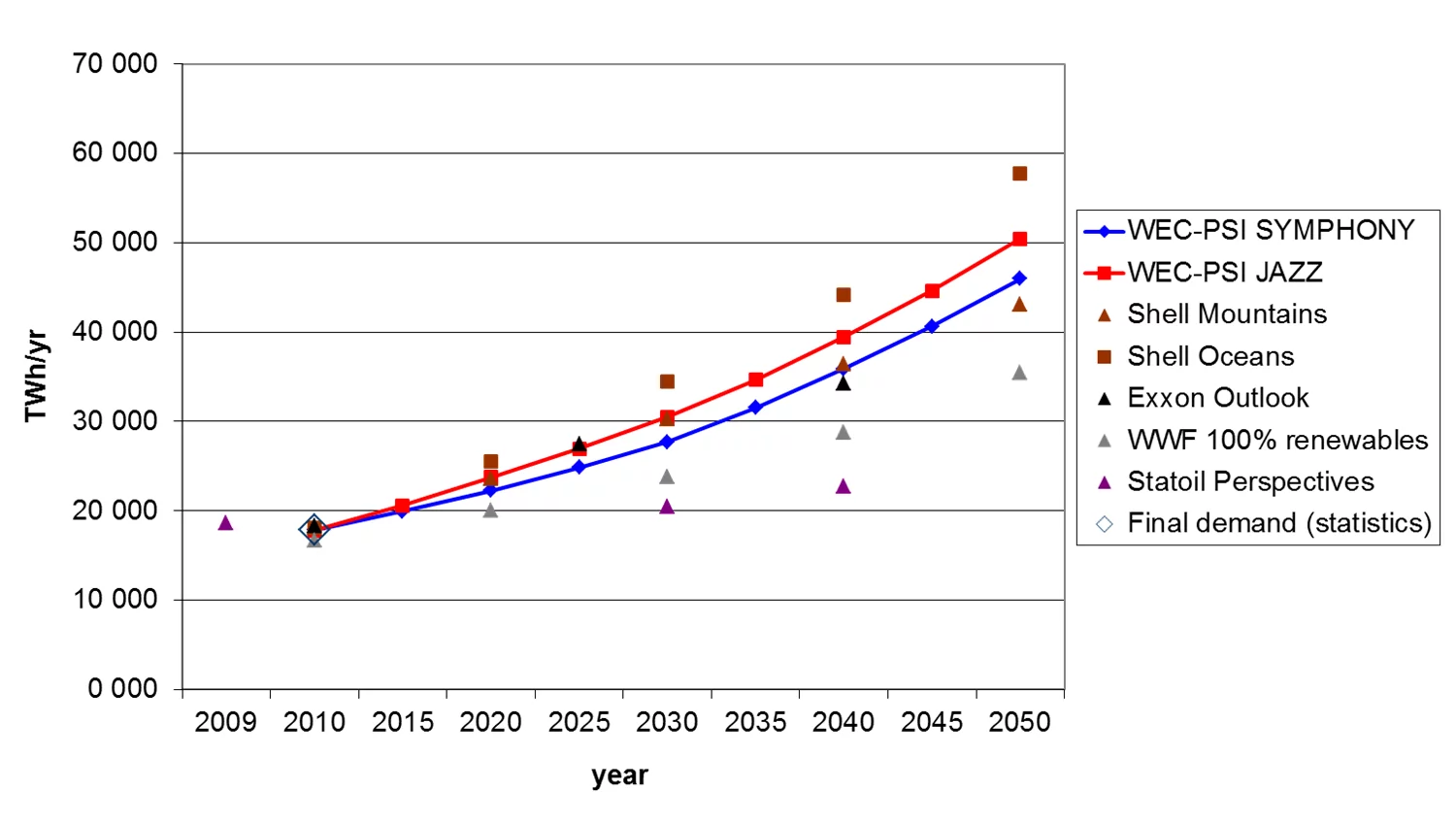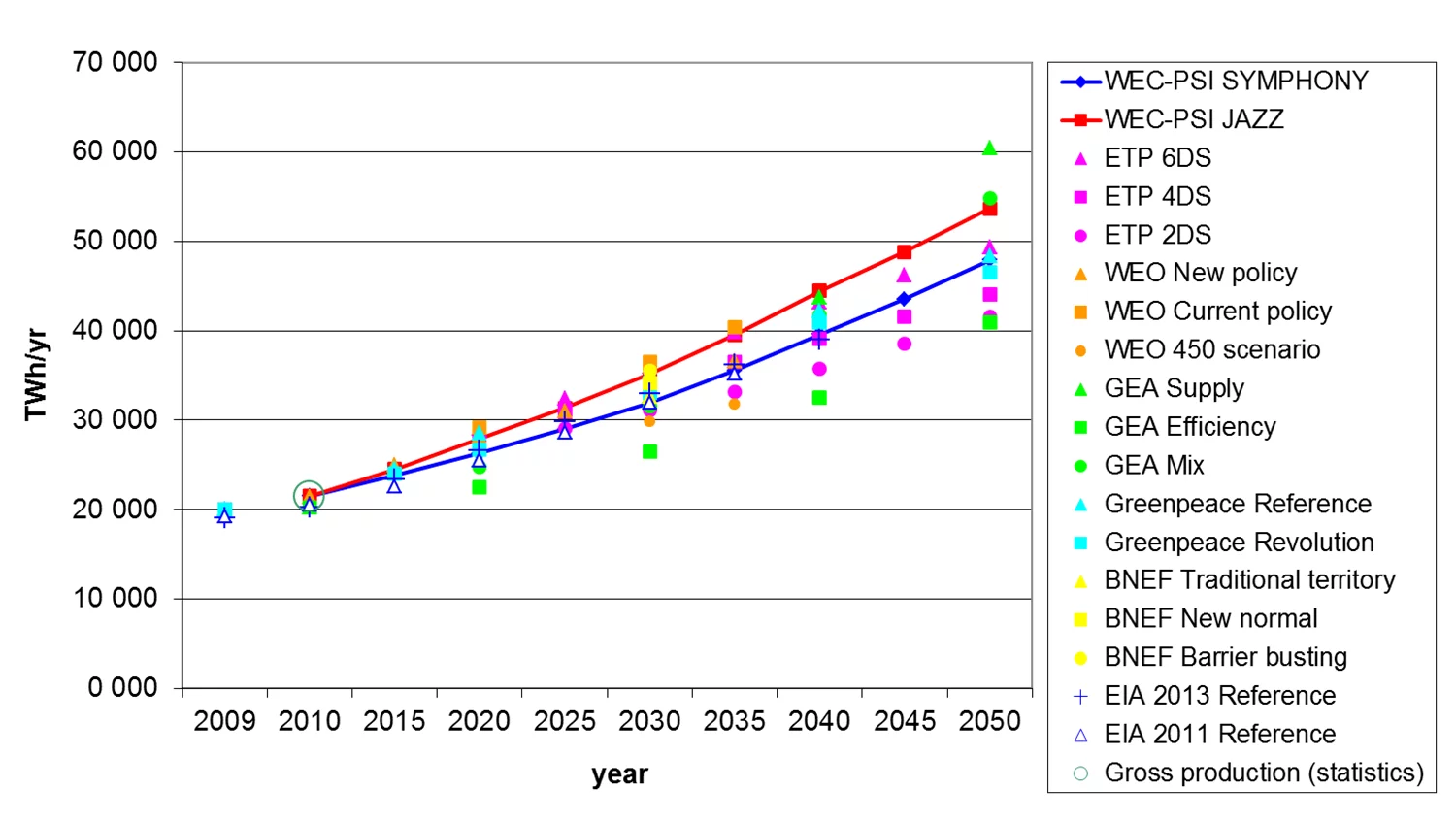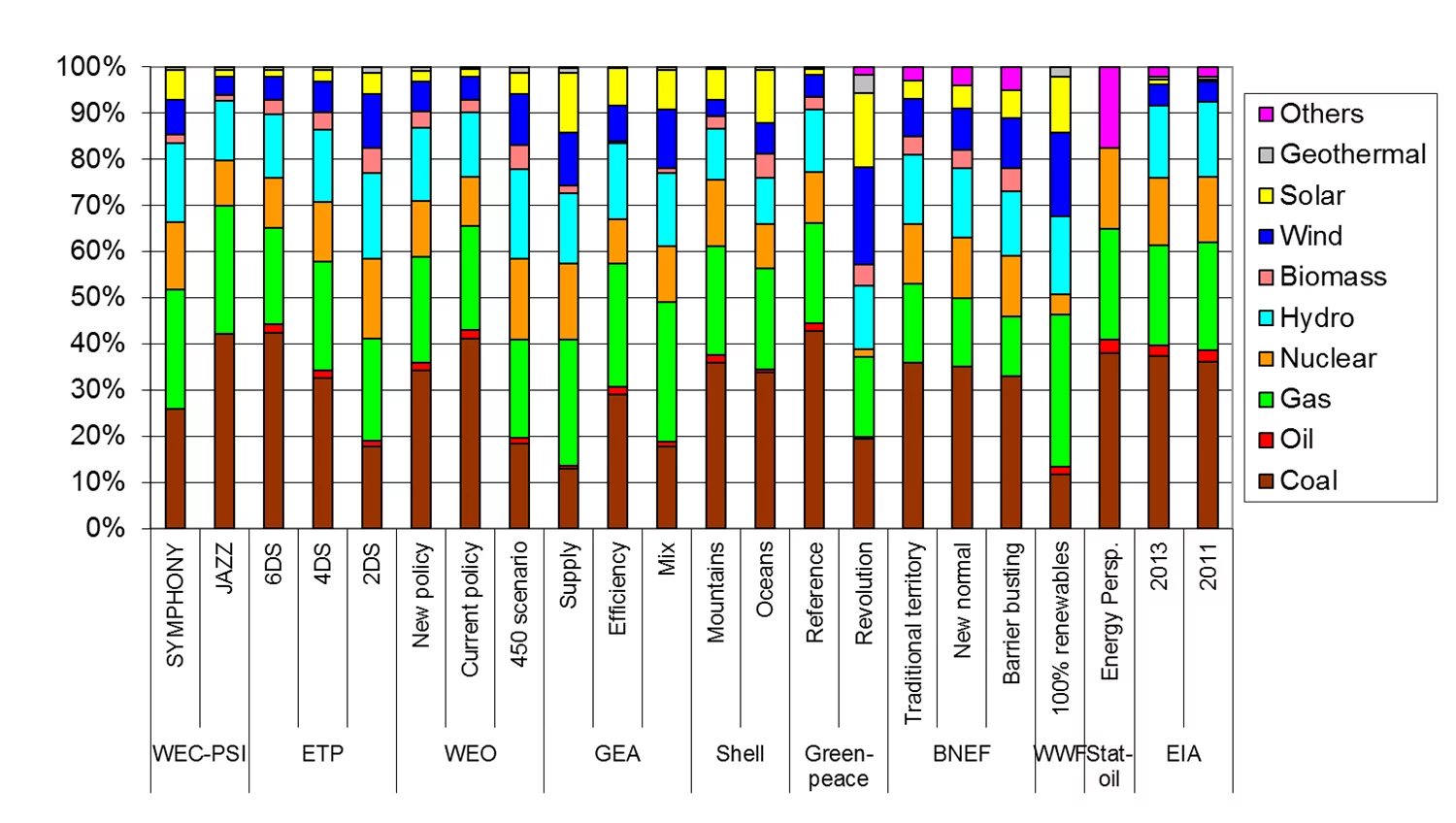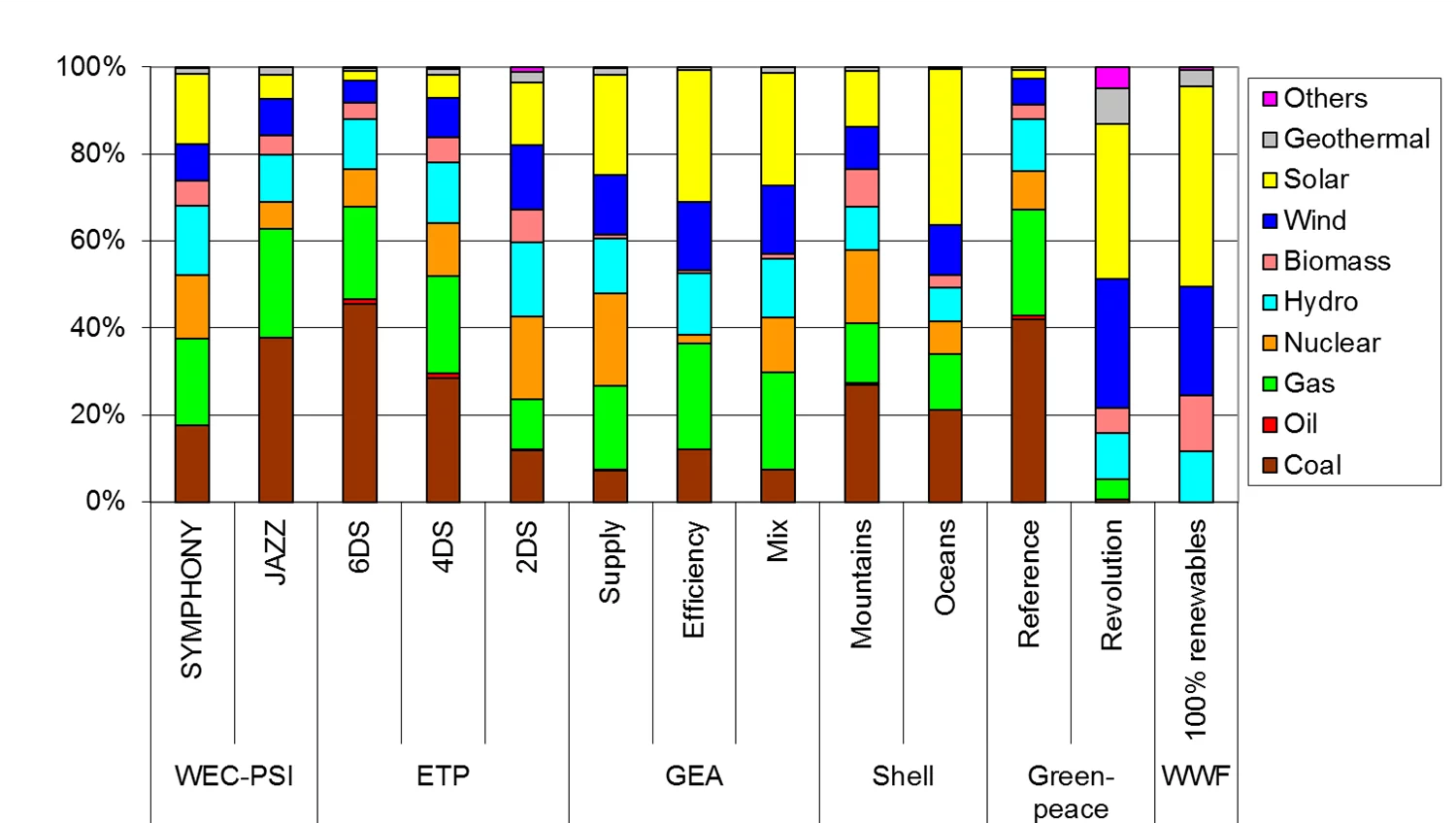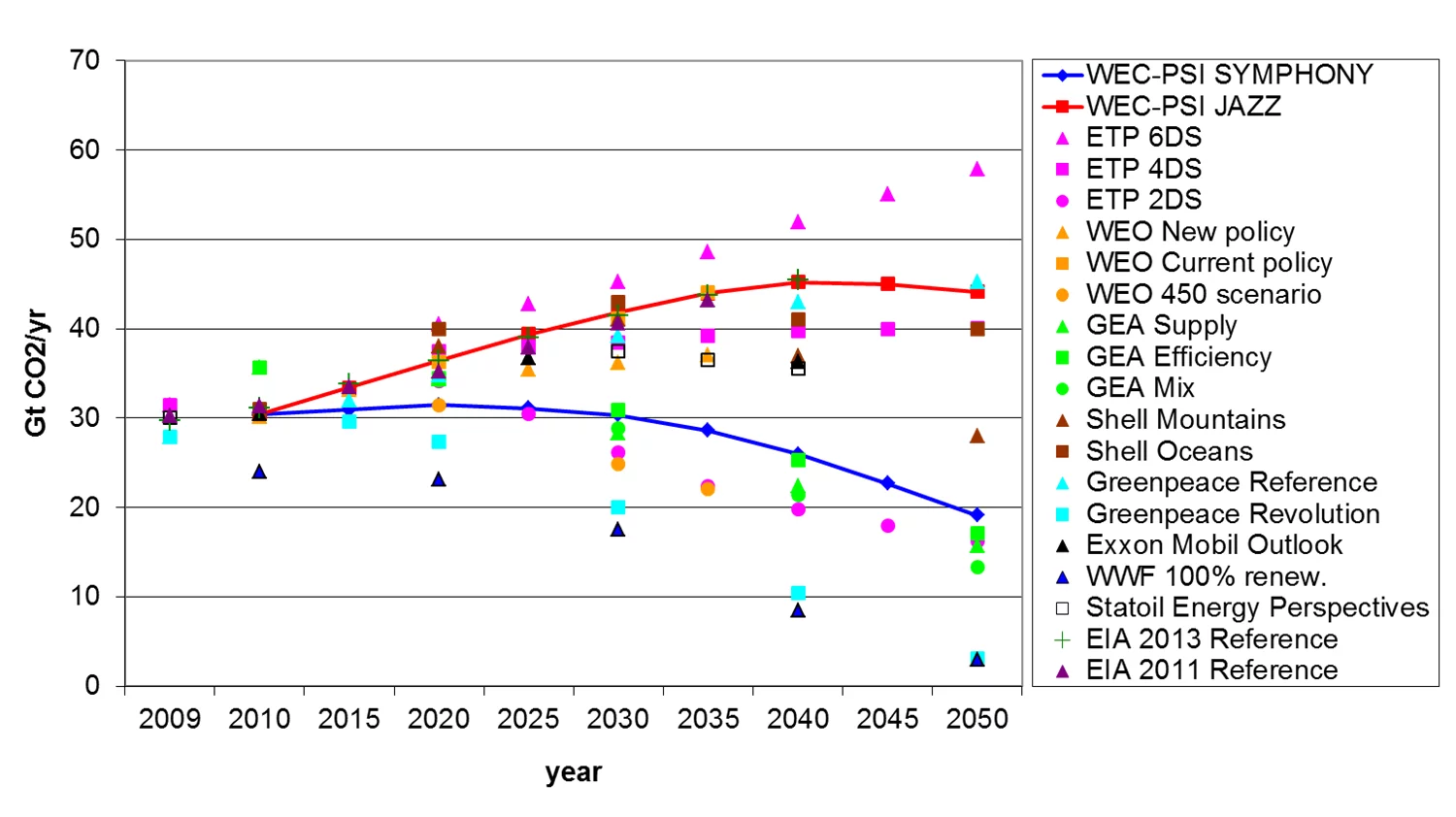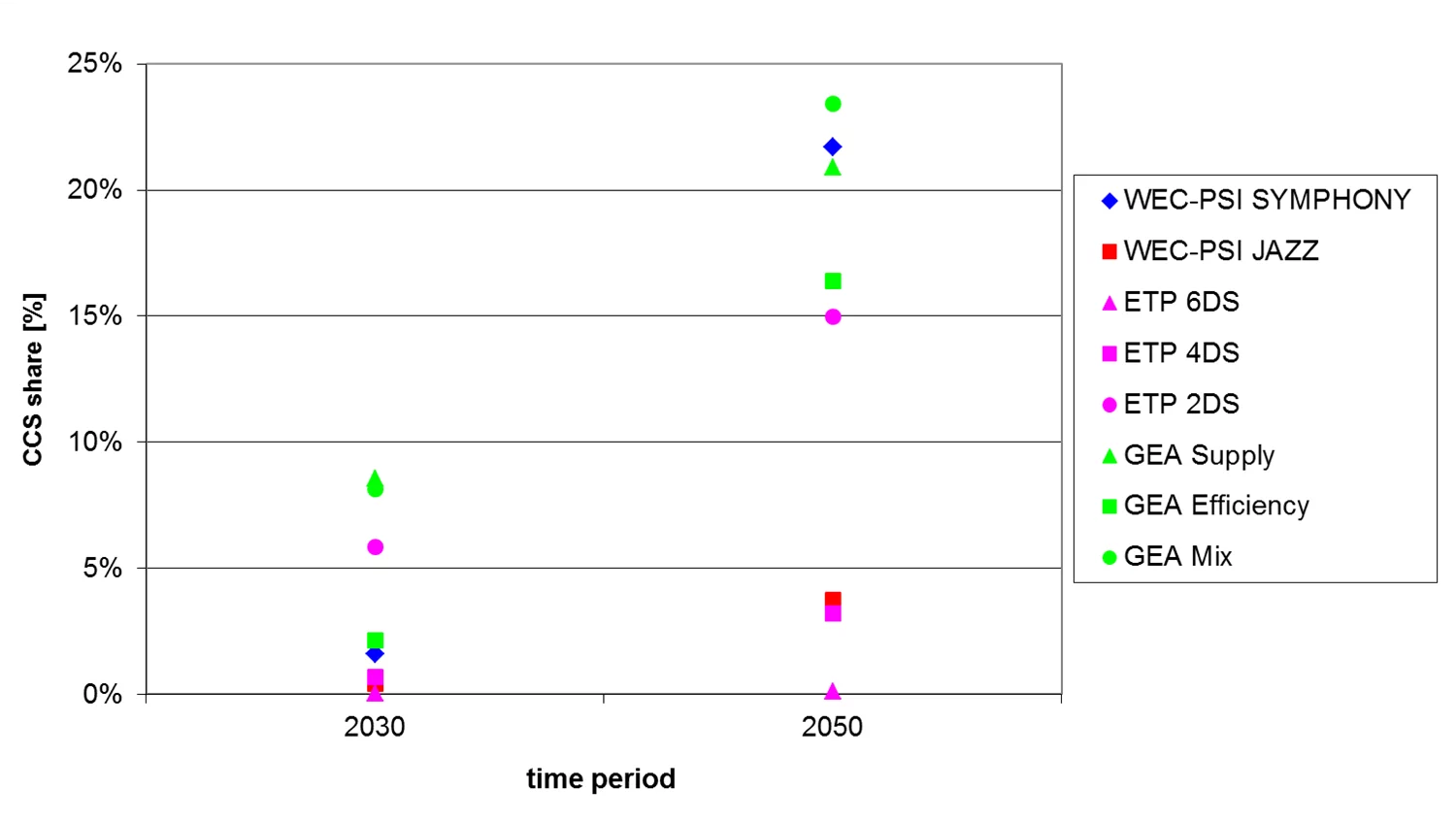In 2011, the Energy Economics group at Paul Scherrer Institut (PSI) and the World Energy Council (WEC) established a partnership (WEC-PSI) to develop jointly global energy scenarios with the aim to improve understanding of options for responding to global energy-related challenges.
Within this collaboration, PSI and WEC developed and quantified two scenarios, JAZZ and SYMPHONY, describing different futures based on two distinct storylines. JAZZ is more consumer driven and market-oriented, with a focus on energy equity, individual access and affordability; SYMPHONY is more voter driven and regulation-oriented, with a focus on achieving environmental sustainability and energy security. More information on the scenarios is available in the latest Energie-Spiegel ("Mirror on Energy") (in English, in German), and on the WEC website.
The scenarios were quantified with the GMM model to provide deeper insights into the implications of different scenario storylines, allowing the identification of robust trends and of key drivers of the energy system.
Population
WEC-PSI SYMPHONY is a scenario with high population growth, lying in the range of the estimates of most of the other considered studies. In contrast, WEC-PSI JAZZ has a lower population growth up to 2050, which is related to the faster rate of economic development in this scenario (see GDP below).Gross Domestic Product (GDP)
The WEC-PSI JAZZ scenario is market-oriented, with a focus on economic growth, liberalisation, and low regulation. For these reasons, JAZZ lies above the other studies. WEC-PSI SYMPHONY instead is in the middle of the range of the other scenario studies (and at the lower end for those few studies that report GDP only in market exchange rate (MER) terms).Total Primary Energy Supply (TPES)
The “scenario funnel” for the Total Primary Energy Supply (TPES) opens widely in the course of time. The high range encloses GEA-Baseline, Shell-Oceans and ETP-6DS. The middle TPES range is framed by WEC-PSI JAZZ at the high end and WEC-PSI SYMPHONY at the lower end. In the same range are the Shell-Mountains, Greenpeace-Reference, GEA (Supply, Mix) as well as ETP (4DS, 2DS) scenarios. The low TPES group of scenarios consists of ETP-2DS, GEA-Efficiency and Greenpeace-Revolution.In the group of scenarios with low fossil shares in the TPES, we find the ETP-2DS, WEO-450, GEA-Supply and GEA-Mix, as well as Greenpeace-Revolution. In these scenarios, more renewables are deployed due to the more ambitious (in some cases “normative”) climate change goals. A number of scenarios (GEA Supply and Mix, Shell Mountains, and WEC-PSI JAZZ) have higher shares of gas based on use of unconventional resources.
Total Electricity Production and Consumption
For the electricity, the studies report either total consumption or total production (and generally not both). Therefore, two graphs are displayed. Total electricity consumption in WEC-PSI JAZZ and SYMPHONY lie between the two Shell scenarios, and above WWF and Statoil. For total production, the WEC-PSI JAZZ scenario is towards the top of the range (which is defined by the GEA Supply and Mix scenarios, and Shell-Oceans), consistent with the high economic growth of this scenario. For WEC-PSI SYMPHONY the total electricity production is lower, close to the two Greenpeace scenarios, but above the scenarios with very high efficiency goals (ETP 2DS and GEA-Efficiency).Looking at the electricity mixes, WEC-PSI SYMPHONY has less coal than WEC-PSI JAZZ due to additional action on climate change mitigation. In JAZZ, gas accounts for a substantial share of electricity production. Considering the overall mix, JAZZ lies between ETP-4DS and ETP-6DS. Divergent from JAZZ, SYMPHONY deploys more renewable sources, and its overall mix and lies between ETP-2DS and ETP-4DS. SYMPHONY is also similar to the Shell-Mountains scenario.

